- AutoSampler
- Routine
- High Field
- Solid State NMR
- Minispecs & EPR
1. AutoSampler
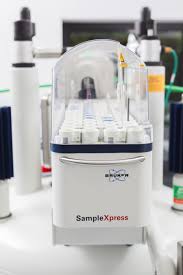
Routine NMR experiments can be easily submitted on one of our 7 NMR automats operating at 400 MHz. The sample changer guarantees an efficient sample throughput. Immediately after the experiment, spectra can be downloaded for further processing and archiving.
All the NMR probes installed on automats are of BBFO type, and thus tuneable over a frequency range that enables observation of nuclei between 31P and 15N, as well as 19F. 1H{19F} decoupled measurements are as well possible. The automat in BCH4313l is equipped with a N2 cooled Prodigy probe increasing its sensitivity by a factor 2, (i.e. factor 4 in measurement time) for 1H, 19F, 13C, and 31P, or other heteronuclei. It can be efficiently used for characterization.
Location: BCH 4313 (r & l), BCH 5313 l (august 2018), BCH 3204, BCH 2407 l, CH F 0492 (r & l)
Rules: Priority for less than 15 minutes, night for more than 30 minutes.

2. Routine
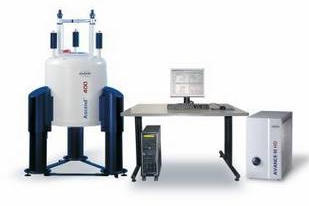
Routine NMR spectrometers operating at 400 MHz are accessible for manual measurements in an open access mode (NMR booking http). The machines in BCH 1504 (l & r) are accessible to EPFL members and external users. The machine in BCH 1504 r equipped with BBI probe is more sensitive to 1H and should thus be used for proton detected NMR methods such as 1d, DOSY, homonucelar 2d (COSY, NOESY, …) and all inverse detected methods (HSQC, HMBC, …). Heteronuclei (13C, 31P, …) detected method will give poor signal to noise on this machine.
The spectrometer in BCH 5313 r, BCH 2407 r and BCH 3204 are accessible to ISIC members only. The spectrometer in BCH 2407 r is equipped with a 10 mm probe and dedicated to high pressure NMR measurements.
Location: BCH 1504 (r & l), BCH 5313 r, BCH 3204, BCH 2407 r, NMRVs (r & l)
Rules: BCH 5313 r : max 2 slots, BCH 3204 (grp Hu), BCH 2407 r (grp Dyson)

________________________________________________________________________________________
3. High Field
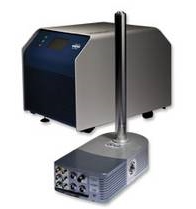
The three spectrometers in BCH 1508, 1510 and 1516 are operating at higher fields (500, 600 and 800 MHz for 1H) and are equipped with cryoprobes.
These machines can be used first if increased resolution is needed (crowded spectra, complex mixtures, overlaps, …). For example, the chemical shift separation at 800 MHz is 2 times larger than at 400 MHz.
These spectrometers are equipped with cryoprobes (helium or nitrogen cooled), allowing up to 4 fold sensitivity enhancements. These machines can thus be used with low concentration samples, for example as a last chance experiment for 13C direct measurement that do not give signal on routine machines.
The spectrometer in BCH 1516 (600 MHz) is equipped with a broadband optimized cryoprobe, delivering sensitivity enhancement for X-nuclei from 15N to 31P. The spectrometers in BCH 1508 and BCH 1510 (500 and 800 MHz) are equipped with proton-optimized triple resonance NMR ‘inverse’ TCI cryoprobes. These probes are optimized for protein samples characterization. Nevertheless, 13C direct measurements of low concentrated samples are as well possible (and recommended). The acquisition probes of these 2 machines are only tuneable to 1H and 13C. It is therefore only possible to acquire 1H and 13C direct spectra (as well as 13C and 15N indirect HSQC, HMBC, …), but no X-nuclei spectra such as 31P.
Location: BCH 1508, BCH 1510, BCH 1516

4. Solid State NMR

Solid State NMR is especially relevant when the compound is insoluble or unstable in solution and when information about the solid state structure is desired. A variety of different nuclei including 1,2H, 6,7Li, 13C, 23Na, 27Al, 29Si, 31P, 51V, 119Sn, 111,113Cd, 207Pb can be addressed by solid state NMR.

5. Minispecs & EPR
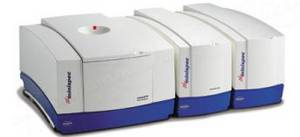
Minispecs operating at 10, 20, 40 and 60 MHz (0.23, 0.47, 0.94 and 1.41 T) are available to measure the effect of contrast agent on the NMR relaxation of water or fat. T1, T2, T1rho and T2e (?) measurement techniques are implemented on these machines.
Location: CH F-0492
.
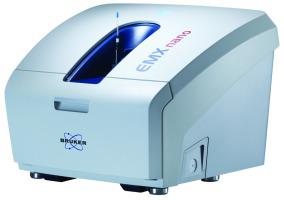
Detection and quantification of unpaired electrons can be done on a benchtop EPR (X band). The machine is accessible on demand (grp Emsley).
Location: BCH1504









